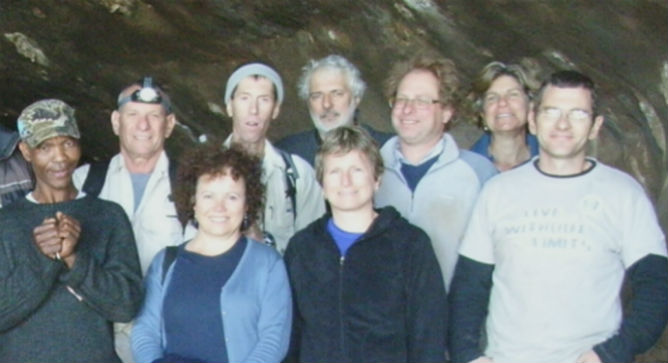Deep in a large cave in South Africa — the size of an airplane hangar – four Israeli scientists were part of an international team that made an astonishing find: the world’s oldest kitchen. There’s no hearth or KitchenAid blender here, but it does contain the oldest evidence of fire use by mankind.
Dated to one million years ago, the cave predates the earliest accepted case of humans using fire by about 300,000 years. The size and scope of the remains in the dark, somewhat damp cave is so compelling there’s no doubt about it, says Liora Kolska Horwitz, a co-director of the research project.
Spread the Word
• Email this article to friends or colleagues
• Share this article on Facebook or Twitter
• Write about and link to this article on your blog
• Local relevancy? Send this article to your local press
As a zooarchaeologist, she helped reconstruct the general layout of the cave environment and the fauna that may have inhabited it or been eaten there. Her Hebrew University colleagues Ari Matmon and Ron Hagai, and Naomi Porat from the Israel Geological Survey, established with good certainty the age of the cave and the activities that went on inside it.
Sitting around the campfire
The team of international scientists co-led by Kolska Horwitz and Michael Chazan from the University of Toronto looked at microscopic traces of wood ash found near animal bones in the Wonderwerk Cave in Northern Cape province. Alongside these remains were stone tools dating from about one million years ago.
Chazan said the cave may have provided opportunities for people to develop culture as well as culinary arts. “Socializing around a camp fire might actually be an essential aspect of what makes us human,” he said.
Published recently in the Proceedings of the National Academy of Sciences, the team’s finding is considered monumental for several reasons, Kolska Horwitz explains.
“The first thing is, we are the only living animal on this planet that cooks food. No other animals do that. There is something unique here in what advantage that gave us. Fire supplied heating and warmth, and allowed us to live in areas that we couldn’t otherwise, such as Toronto,” Kolska Horwitz tells ISRAEL21c.
“Possibly it also helped in defense against wild animals and for early hominids, against other people,” she adds.
The ability to cook food has evolutionary advantages as well. It reduces the biomechanical pressure on the jaws, making it easier to chew food, Kolska Horwitz explains. And cooked food provides a higher caloric intake, enabling the human brain to expand and grow. She calls the controlled use of fire “an enormous cultural and technological invention, which has enabled humans to evolve and develop.”
Israelis did the dating game
The Israeli contributors provided the tools for dating the cave. Hagai, an expert in paleomagnetism, looked at the switching of the earth’s magnetic poles against known reference points. Matom, who specializes in cosmogenic burial data, measured cosmic ray decay in soil no longer exposed to the outside air, while Porat applied luminescent dating techniques to date the cave’s layers of sediment.
The dolomite cave, at least two billion years old, saw its earliest inhabitants probably two million years ago. Whether or not people were living in the million-year-old kitchen Kolska Horwitz can’t say for sure.
“We do know from later periods that people lived in caves and slept in caves. What we do not have in this cave is a proper hearth as one would build around a campfire. Those appear circa 400,000 years ago.”
With the invention of the hearth, “People were using fire in a much more routine manner,” she says. Before then, working with fire probably was more like “trial and error as you burned down the kitchen,” Kolska Horwitz concludes with a laugh.













